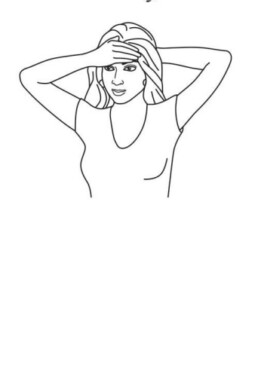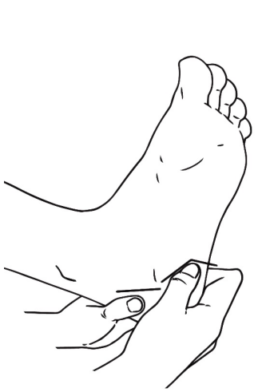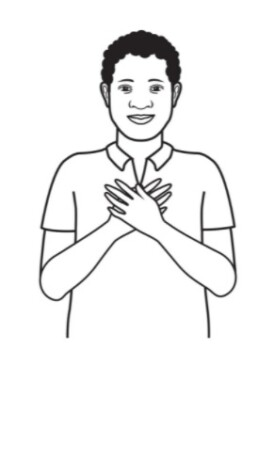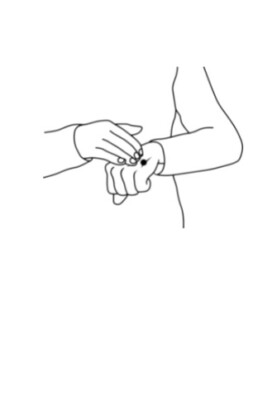EFT heals PTSD: Study Finds Touch Matters, and EFT works Best
A European research team conducted a study to understand how to heal PTSD. They focused on touch-based interventions to address PTSD in adults. The study, by McGreevy and Boland, appeared in the European Journal of Integrative Medicine. The researchers concluded that touch-based interventions can help improve emotional regulation and reduce the symptoms of PTSD. Among all the interventions, however, they found that Emotional Freedom Technique got the best results and had the strongest evidence base. Again, we see the data: EFT heals PTSD.
Finding ways to heal PTSD: Beyond talk or pharmaceuticals
PTSD is a problem which affects health and functioning. There are some evidence-based interventions, including pharmaceutical and psychological approaches. However, the researchers note, these are not very effective.
Meanwhile, touch-based interventions can help people regulate their autonomic nervous system (ANS). Controlling the ANS helps downregulate the fight-flight response. Once calm, they can use the executive skills needed to process trauma in traditional talk therapy. According to Bessel van der Kolk, and quoted by the authors, learning to control the ANS may be the biggest requirement to address PTSD.
Against this backdrop, the researchers wondered what touch-based approaches are being used with PTSD and to identify key concepts that explain how touch-based interventions help.
Study Setup
The study was an integrative literature review. Of the 39 articles covering eleven different touch-based interventions reviewed, 17 used EFT and 10 used mindful awareness body therapy. The other methods, with only one or two studies each, included massage therapy, Rosen Method Bodywork, Upledger Cranio-Sacral Therapy, and Zero Balancing.
Quantitative, qualitative and conceptual data were identified on eight databases. Researchers appraised and synthesized the finding using thematic analysis strategies, the Mixed Methods Appraisal Tool (MMAT) and the Critical Appraisal Skill Program (CASP).
Study results
All studies found clinical reduction in PTSD symptoms, though four did not achieve statistical significance. Of those, three were the mindful awareness approaches and one was light touch. EFT stood out for having the strongest evidence base.
Noteworthy
It is significant that the authors, Susan McGreevy and Dr. Pauline Boland, are independent researchers at the Department of Clinical Therapies, University of Limerick, Ireland. They have no formal affiliation with EFT or any EFT organizations.
EFT Heals PTSD
Touch matters. This study demonstrates that touch, indeed, can significantly decrease the symptoms of PTSD and help a variety of people overcome the effects of trauma. Of all the interventions reviewed, EFT had the strongest evidence base. More studies are needed to determine the usefulness of the other interventions.
If you would like to deepen your understanding of EFT, check out my other articles. If you are a licensed clinician, get certified!
Blame vs. Responsibility
I wrote about blame vs. responsibility a few years ago and the article got a lot of traction. I am revisiting it today because this topic is so important! Blame is incredibly disempowering. Responsibility, on the other hand, is powerful! Shifting from blame to responsibility will help us feel better about ourselves and our relationships. Here are some more thoughts about blame vs. responsibility and some tips to help you make the shift:
Blame is rigid, accusatory, and a win/lose, zero-sum affair. When we are blaming, we are victims. It’s not a good look or a good strategy.
Taking responsibility, on the other hand, is an act of grace, maturity, and flexibility. It is also a win/win approach. Read on to learn more about the difference between blame and responsibility and some tips on helping to make the shift!
Self-blame
Many people torment themselves with self-blame. They have trouble forgiving themselves and hold themselves to a high standard of perfection. None of us can hope to achieve perfection and most of us can accept that in others, but we usually have a harder time accepting it in ourselves. (The ones who don’t are what we call narcissists, and that is a topic for a different blog!)
Self-blame keeps us stuck in a shame cycle. It is hard to move forward with grace and happiness if we are continually beating ourselves up for the mistakes we have made. It leaves us paralyzed with fear of making more mistakes and proving ourselves unworthy.
Blaming others
Self-blame is harmful, and blaming others is just as fruitless. Decades of psychotherapy dedicated to looking in the rear-view mirror was fabulous for pointing to the need for good parenting skills, better teaching, and moving toward better, more compassionate schools.
It was awful, however, for helping people move forward with happy, empowered lives. Blaming others is like fly tape. When we keep blaming those who have wronged us, we stay stuck in the problem. The more we rail against the unfairness of it all, the more we lash out with blame in thought or word or deed, the more stuck in the problem we become.
Knowing that our childhood wounds left their marks is useful, but it’s only a part of the story because it does not teach us how to move forward.
Taking responsibility
Being able to take responsibility without assigning blame is a powerful move. It happens when we can stand in grace. That grace comes from doing our work and working on our healing.
One important shift you will notice is your increased capacity to have compassion for the people who hurt you. Rather than being triggered and seeing yourself as their victim, you will see their own woundedness and vulnerability. When you can have compassion for the people who hurt you, you are shifting from blame to responsibility. This can open the door to forgiveness. It can also help release us from a disempowered victim stance, shifting us toward a powerful, creative, capable, growth-oriented perspective.
Shifting from blame to responsibility
When we find ourselves stuck in unhappy situations, we are probably carrying around some unhealed wounds, or bound up by scar tissue. There are energy practices that can help you make a shift from blame to responsibility.
Daily tapping:
EFT of any of the related tapping exercises like TFT or TTT can help us keep our circuits clear. They are simple practices that can be done very quickly in just a few minutes. Adding them to the morning routine takes only a few minutes but can deliver great results!
The Personal Peace Procedure:
Systematically compiling a list of troubling events from the past, and tapping them away one by one, is a fantastic way to heal old wounds. We recommend, however, working with a trained practitioner if you are dealing with significant trauma.
Charkra spinning:
When we have an uncomfortable emotion, we can learn to feel where in our body the energy has become congested. Often it is the heart or solar plexus. We can open up the stuck or over-active energy by gently circling our hand over the chakra. Placing our hands on our chest or belly can also help restore balance.
Journaling with a healing ending:
When we are grieving difficult experiences from the past, writing can help a lot. It slows us down, and that is inherently a good thing! Our brainwaves tend to get fast and jagged when we are upset, but when we are writing, our hands can only move so fast – and our brainwaves seem to slow down along with them. Our thoughts become clearer as a result (our respiration, heart rates and blood pressure slow down, too!). You can energize the journaling practice by lighting a candle when you finish, signifying that you are letting it go. If you can safely burn the page, that also can help. Shredding and saturating the scraps with water is another way to signify that you are letting the story go.
Sage your space
Burning sage (or Palo Santo) can help clear the energy in your physical spaces. After working to resolve a troubling experience from the past, it is a good idea to clear your room or home to remove any stuck, negative vibes that are left over. You can also use Reiki symbols or hang crystals to change the energy in a room.
Putting it together: blame vs. responsibility
These practices will help you to take back your power from the wounded people who wounded you. When your wounds are significant, there is nothing like working with a pro.
Racing thoughts? Try this.
If you’re looking for a tool to help you calm your racing thoughts, you’re in the right place. This blog teaches you an easy tool you can add to your self-care toolkit.
One of the fastest and most effective ways to calm a racing mind is the Healing Head Hold. This simple body-based technique helps you to defuse negative emotions helps balance your brain hemispheres. You can do this technique alone or with a partner, and in less than five minutes you'll feel much calmer. Practice the technique right now by watching the video below and following along. You can also download written instructions in English, Spanish, and Portuguese.
How it Works
Simply place one hand on your forehead, and the other on the back of your head at the occiput. You can do this alone or with a partner. Hold for a few minutes until you feel calm. You might feel your pulse in your fingers.
Why It Works
By using energy medicine techniques like the Healing Head Hold, you help your body relax and your brain rebalance. This allows you to calm your thoughts quickly and easily.
If you haven’t given the Healing Head Hold technique a try yet, do it now. Take notice of how your body feels both before and after you use the technique. This is just one of many body-based tools you can use to help yourself calm your thoughts.
More Techniques for Racing Thoughts
If you found the Healing Head Hold technique helpful, here are a few more techniques you can use to calm racing thoughts: the Balance Hookup and the Stress Blowout.
If you want to learn tools like this to improve your wellbeing, contact me.
Video Resources Provided by the ACEP Humanitarian Committee
The mission of the ACEP Humanitarian Committee is to develop and implement humanitarian projects that alleviate emotional distress caused by catastrophic natural and man-made events around the globe. We do this by encouraging and assisting ACEP members in developing humanitarian projects that utilize recognized energy psychology and other modalities that meet ACEP’s standards and guidelines. Learn more here.
Feel overwhelmed? Try this
If you want to learn a tool to help when you feel overwhelmed, you’re in the right place. This blog teaches you an easy tool you can use right now to help you release feelings of overwhelm.
Next time you feel overwhelmed, try bouncing up and down on the balls of your feet. You can also sit in a chair and massage your heel and ankle areas. The Heel Shock Release is a simple body-based technique that will help you get out of your overwhelm and back in your body. The technique comes to us from Donna Eden. Practice the technique right now by watching the video below and following along. You can also download written instructions in English, Spanish, and Portuguese.
How it Works
You can do this by bouncing on the balls of your feet and allowing your heels to strike the ground. You can also rub or massage your heels: on the sides, where the heel meets the arch, and behind the ankle bones.
Why It Works
When you use techniques like the Heel Shock Release, you are interacting with your body's energy system and increasing the flow of energy through your system. This allows you to come back into your body and out of your overwhelm.
According to traditional Chinese Medicine principles, stimulating shock points in our heels helps balance the yin and yang meridians. This also balances the sympathetic and parasympathetic nervous systems. In addition to when you are overwhelmed, you can use this technique immediately after a trauma, if you feel dissociated, or when you are shocked or numb.
If you haven’t given the Heel Shock Release a try yet, do it now. Take notice of how your body feels both before and after you use the technique. This technique is just one of many you can use to increase the flow of energy and feel more grounded. These are great tools to use when you feel overwhelmed.
More Techniques When You Feel Overwhelmed
If you found the Heel Shock Release helpful, here are a few more tools you can use to increase your energy and discharge feelings of overwhelm: Four Thumps and Thymus Thump.
If you want to learn to use tools like this to improve your wellbeing, contact me.
Video Resources Provided by the ACEP Humanitarian Committee
The mission of the ACEP Humanitarian Committee is to develop and implement humanitarian projects that alleviate emotional distress caused by catastrophic natural and man-made events around the globe. We do this by encouraging and assisting ACEP members in developing humanitarian projects that utilize recognized energy psychology and other modalities that meet ACEP’s standards and guidelines. Learn more here.
Need to relax? Try this.
If you need to relax, read on! This blog teaches you an easy tool you can use right now to help you r e l a x.
One of the fastest and most effective ways to get control of our nervous system is to get control of our breath. The Calm Breathing technique is a formula that will help you get calm fast the next time you are too tense. Practice the technique right now by watching the video below and following along. You can also download written instructions in English, Spanish, and Portuguese.
How it works
Take a sharp, deep breath in through the nose. Hold for a couple of seconds, then let the breath out slowly, with a sigh.
Why It Works
Breathing is something that we do all day long without thinking of it, yet we can also control our breathing consciously. When we practice Calm Breathing, we use our breathing to get control over our nervous system. When we slow down our breathing, we slow down our brainwaves. This can help us get out of anxious high-beta wave frequency and into calm alpha waves.
If you haven’t given Calm Breathing a try yet, do it now. Take notice of how your body feels both before and after you use the technique. This technique is just one of many body-based tools that will help you to relax.
More Techniques When You Need To Relax
If you found Calm Breathing helpful, here are a few more tools you can try next time you need to relax: Soothing Butterfly Hug, Simplified Self-Havening, and Calming Hug. All of the videos and techniques in our "Try This" series were created by ACEP's Humanitarian Committee in order to help people heal by spreading the word about the powerful effects of energy psychology techniques. We invite you to help by sharing this information!
Need Help From a Professional?
Many people are experiencing stress and distress, while seeking alternatives to pharmaceuticals. ACEP is a nonprofit, 501c3 dedicated to the research, education, and sharing of energy psychology. Check out the ACEP practitioner directory to find a certified ACEP therapist in your area or online.
Author: Sarah Murphy, LPC
Sarah Murphy is a Licensed Professional Counselor and coach with more than 12 years of clinical experience. She is Communications Committee Chair for ACEP and staff therapist for Unite for HER. She specializes in energy psychology, including EFT, as well as mindfulness and hypnotherapy. Send comments to SarahMurphyLPC@gmail.com; Learn more at www.transformative-therapy.com.
Video Resources Provided by the ACEP Humanitarian Committee
The mission of the ACEP Humanitarian Committee is to develop and implement humanitarian projects that alleviate emotional distress caused by catastrophic natural and man-made events around the globe. We do this by encouraging and assisting ACEP members in developing humanitarian projects that utilize recognized energy psychology and other modalities that meet ACEP’s standards and guidelines. Learn more here.
New Research on AIT (Advanced Integrative Therapy)
A pilot study by Gregory Brown and colleagues and published in the journal Energy Psychology looked at using Advanced Integrative Therapy, or AIT, to clear negative emotions related to past trauma. This is the first formal academic research on AIT!
The study, Therapists’ Observations in Reduction of Unpleasant Emotions Following Advanced Integrative Therapy Interventions, found that the subjective unites of distress (SUD) decreased from an average of 8.3 out of ten down to a zero or one, in just one session of AIT.
The theory of AIT
Research on energy psychology techniques has grown over the past decades, with most of the studies focused on meridian tapping treatments like Emotional Freedom Techniques (EFT) or Thought Field Therapy (TFT). AIT is a chakra- and language-based technique. This pilot study is the first to explore the effectiveness of AIT.
In AIT, the theory is that when we have longstanding patterns of negative emotions, they usually stem from an originating event, probably during childhood. Then the negative pattern is entrenched by some reinforcing events. All that leads up to present-day suffering.
In order to clear these patterns and the suffering they cause, clinicians guide clients in creating statements about the problem. Then, they repeat the problem statement while placing their hands on various points that correspond to the major chakras, down the midline of the body. By going through this process, the problem becomes deactivated and the subjective distress is resolved.
The study setup
The pilot study was a cross-sectional survey design using clinician data and observation. All the clinicians who participated were experienced or expert in using AIT. These clinicians, from all around the world, completed a 17-question web-based questionnaire. The questionnaire assessed SUDs, somatic sensation, and emotion.
Results of this research on AIT (Advanced Integrative Therapy)
There were 76 completed surveys included in the study. Participating clinicians were physicians and licensed mental health providers. They used their charts to complete the survey questions.
Emotions addressed included anxiety, sadness, fear, anger, shame, and helplessness. Seventy seven percent of cases worked on patterns rather than single events. Seventy five percent of the issues addressed were chronic.
Because of the nature of the study, it is not possible to determine causation. However, the clinicians reported a drop in SUDs from 8.3 to 0 or 1 in 92% of cases.
Why this study matters
This study does not allow us to draw big conclusions about cause-and-effect. However, clinicians reported an impressive drop in the SUD rating after just one “round” or treatment with AIT. The results seem to warrant further investigation. The results are an auspicious beginning to research on AIT (Advanced Integrative Therapy). We can consider this a “win” for AIT and for energy psychology!
Want to learn more? You can keep tabs on research about energy psychology by following our research page. Interested in taking a deeper dive into EP? We will launch our Comprehensive Energy Psychology course next summer!
Author
Sarah Murphy, NCC, LPC, serves on ACEP’s board and as the chair of ACEP’s research committee. She has a private counseling practice. She also works as staff counselor for Unite for HER, where she provides counseling for clients who have cancer.
Can Energy Psychology Help with Mindfulness?
The practice of mindfulness meditation is becoming very popular. However, many people find it difficult to start or stay with the practice. Energy psychology practices might help. ACEP founding member and past president Fred Gallo, with his colleagues Bhikkhu Anālayo, Christiane Steffens‑Dhaussy, and Dawn Scott recently published a paper exploring the relationship between mindfulness and the energy practices used in Energy Psychology (EP). You can find their interesting and insightful article, Energy Practices and Mindfulness, in the June 2022 edition of the online open-access journal Mindfulness. They help answer the question, can energy psychology help with mindfulness.
The roots and reach of mindfulness
The practice of mindfulness is central to Buddhism. Indeed, Jon Kabat-Zinn, the creator of MBSR (Mindfulness Based Stress Reduction), states that MBSR was influenced by his study of vipassana. Vipassana is the traditional meditation practice of Theravada Buddhism. Recently, mindfulness has become the most common form of meditation practice in the US. Mindfulness has permeated other disciplines such as yoga, martial arts and psychotherapy.
The article begins with a discussion the Western concept of energy. It goes on to distinguish it from the Chinese idea of qi and the ancient Greek pneuma, as well as the Chinese and Tibetan concepts of wind. Then follows a discussion the benefits of qi gong and tai chi and the impact of mindfulness practices on the body’s energy system.
Can energy psychology help with mindfulness?
The practice of vipassana as taught by Buddhist master S. N. Goenka can lead to somatic experiences. This makes sense because this form of mindfulness stimulates the flow of qi. According to traditional Chinese medicine (TCM), people can experience physical, emotional, and mental problems when their energy is out of balance – whether too high, too low, or even completely blocked.
Stimulating specific acupoints on the impaired meridian/s brings the bodymind back into balance, and the symptoms often clear up. EP differs from other traditional techniques because it does not use needles or massage, and because it treats primarily mental and emotional symptoms.
Buddhism’s five hinderances correspond to today’s understanding of psychology
The authors also discuss the Buddhist concept of the “five hindrances.” This expression refers to a particular set of mental conditions that prevent people from feeling peaceful and thinking clearly. Clearing up or overcoming the hinderances allow practitioners to develop their meditation practices and their education in general.
These hinderances are:
- sensual desire
- anger or irritation
- sloth, or laziness
- restlessness and worry
- doubt
Buddhists believe that overcoming the five hindrances is an indispensable requirement for being able to cultivate mental tranquility as well as liberating insight.
Clearing the hinderances
The authors discuss several possible meridian-based treatments to address each of the hinderances. A sampling of their suggestions include:
- To address overstimulation of sensual desire, stimulate the stomach meridian and kidney meridian by tapping below your eye (stomach 1 point) and below your clavicle (kidney 27 point).
- To address anger and irritation, you can hold your wrist, and stimulate several points on the pericardium, small intestine, and heart and lung meridians.
- To address laziness, use the Thymus Thump.
- To address restlessness and worry, you can use Frontal Occipital Holding or the ESR (Emotional Stress Release) techniques.
- To address doubt, you can try Cook’s Hookup.
In every case, these techniques demonstrate how energy psychology can help with mindfulness.
Practical matters
Meridian-oriented EP methods, such as EFT, TFT, and TTT, address and reduce or eliminate symptoms of trauma, anxiety, and other mental health issues by combining Western psychology with Eastern-influenced stimulation of meridian points. In addition to the tips listed above, the article suggests techniques for energetic protection.
This protection can be important for clinicians, who often work with clients who are experiencing a variety of mental and emotional upsets, as well as for anyone who interacts with other human beings, who often experience a variety of mental and emotional upsets. Among these techniques for protection are the “second skin,” the “invisible cloak,” and the “zip up.” The article provides detailed instruction on how to do these.
If you would like to learn more about the human energy field, consider signing up for ACEP’s new-and-improved Comprehensive Energy Psychology training, coming in the summer of 2023! To follow research on EP, email John Freedom and ask to be added to the EP Research email list.
Anālayo, B., Steffens-Dhaussy, C., Gallo, F. et al.(2022). Energy Practices and Mindfulness Meditation. Mindfulness. https://doi.org/10.1007/s12671-022-01923-6
Blog authors:
Sarah Murphy
Feeling keyed up? Try this.
If you want to learn a safe mind-body technique to help next time you feel keyed up, you’re in the right place. Read on to learn an easy tool you can use at any time to calm down.
When you feel "keyed up" or out of balance, you can get yourself back in balance by practicing the Brain Balancer. This simple body-based technique helps restore left-right balance and allows you to feel more clear and connected. The technique was adapted by Phil Mollon from Roger Callahan's Thought Field Therapy. Practice the technique right now by watching the video below and following along. You can also download written instructions in English, Spanish, and Portuguese.
Why It Works
The Brain Balancer blends principles of neuro linguistic programming and energy psychology. While tapping an important triple-warmer meridian point, you move your eyes and activate different brain functions. All of this allows you to feel present, balanced, and centered.
This technique is also excellent to use when you feel like you haven't fully processed your emotions. If it sounds familiar, perhaps that is because this technique often is a standard part of Emotional Freedom Techniques (EFT) and Thought Field Therapy (TFT) sessions.
If you haven’t given the Brain Balancer technique a try yet, do it now. Take notice of how your body feels both before and after you use the technique. This technique is just one of many you can use to get more calm and present.
More Techniques to help when you are keyed up.
If you found the Brain Balancer helpful, here are a few more tools you can use to calm down and get present: Breathing Into Balance and the Cross Crawl.
If you want to learn to use tools like this for your wellbeing, contact me.
Video Resources Provided by the ACEP Humanitarian Committee
The mission of the ACEP Humanitarian Committee is to develop and implement humanitarian projects that alleviate emotional distress caused by catastrophic natural and man-made events around the globe. We do this by encouraging and assisting ACEP members in developing humanitarian projects that utilize recognized energy psychology and other modalities that meet ACEP’s standards and guidelines. Learn more here.
Is there scientific evidence for the chakras?
Margaret Moda conducted a review of the research on the anatomical and physiological evidence of the chakras. Her study was published in the April 2022 issue of the International Journal of Healing and Caring. After reviewing the literature on the evidence of the chakras, Moda concluded that there is some evidence that chakras emit electromagnetic radiation and have possible anatomical correlates. There is, indeed, some scientific evidence for the chakras!
The theory
The idea of chakras stems from ancient Eastern traditions and has become increasingly popular in the West. The popularity of the concept mirrors that of the meridians – born in the East, gaining traction in the West. There is some scientific evidence supporting the meridians. In this study, Moda sought to examine the evidence for the chakras based on electromagnetic radiation or anatomical correlates.
The study setup
Moda searched databases for studies on the anatomical and physiological studies of the chakras. She excluded papers on theory or intuitive descriptions and expanded her search to include books containing scientific studies. Thus, sixteen studies met the search criteria.
Study results find evidence for the chakras
Moda grouped her results in two categories: anatomical studies and physiological studies.
Anatomical Studies
Two studies found that the chakras align with known nerve plexuses:
- Rokade (2017) found a plexus of nerves near the location of the purported heart chakra.
- Sweta and colleagues (2018) found a plexus of nerves near the location of the purported base or root charka.
Physiological Studies
Several studies found electromagnetic emissions from the chakras:
- One study by Motoyama (1981) used a magnetometer, copper wire and photoelectric cells. When the subjects activated a chakra, the photoelectric cells emitted a faint light and the copper electrode detected high-frequency oscillations.
- Hunt used an electromyograph (EMG) (1977, 1986). She detected wave forms and frequency bands from 100 Hz to 1 KHz, corresponding to various colors, in the area of the chakras. Further, she found that, as the subjects activated or "opened" a chakra, the frequency increased. In 1997, Wirth and colleagues attempted to replicate the findings and did, but others have questioned their research.
- Rewold and Husen (2020) used electrodes to measure frequencies above 200Hz in a group of biofield practitioners and university students. In both groups, the frequency bands matched what Hunt had found. Additionally, the frequency band power was higher among the biofield practitioners than the students.
- Jalil et al (2015) used radiofrequency meters with dipole whip antennas to detect electromagnetic radiation from the chakra locations in young healthy subjects. They found that each chakra emits a particular band of frequencies. Interestingly, their findings (chakras emit frequencies of 29 MHz – 86 MHz) matches the overall frequency of the human electromagnetic field of about 53 MHz.
In each case, there were measurable electromagnetic emissions from the chakras.
Why this study on the evidence for chakras matters
This study adds to our understanding of the human electromagnetic field and round up the evidence for the chakras. While many Westerners remain skeptical of the meridians, chakras, and biofield, these concepts are aligned with what we know about physics: Humans have electromagnetic energy and bioelectric fields.
Get involved!
There are many ways for you to participate in ACEP's mission. If you would like to learn more about the chakras, check out ACEP’s upcoming Comprehensive Energy Psychology course! In order to support research, consider making a donation. Finally, if you would like to get involved with ACEP, join a committee!
Five things to say when introducing people to energy psychology
People who use energy psychology (EP) in their own healing work or in their clinical practice know how powerful it can be. But it can be tricky to introduce these Eastern-influenced tools to Westerners. With the right elevator speech, you can help people understand EP. Then, they might give it a try – and then, they will feel better. Here’s how you can introduce energy psychology to people who aren’t familiar with it.
1: First, give a general overview of what energy psychology is.
Many Americans today have heard of acupuncture and the chakras, but everyone has heard the term “the mind-body connection” or, as Deepak Chopra has turned to calling it, “the bodymind.” (Because they are so interconnected, they are really the same thing!) So, when you are introducing EP to people who don’t know about it, you can say
“Energy psychology is a set of mind-body tools that help people deal with their mental health issues.”
I like to say, “EP a set of body-based tools to help manage our difficult emotions.” You can make it your own, using the language that best suits you and your audience.
2: Then, let them know that other people are using it
People like to be part of things; it provides a sense of belonging. When we are introducing something that could seem unusual, this can be especially helpful! You can say something like
“These techniques have been around for more than 30 years and thousands of people in the US and around the world have been using them for many kinds of issues.”
You can call back the issue that people are presenting with, because EP has a strong enough track record to cover just about everything people are facing, and all get good results. So, instead of “many kinds of issues,” you can use whatever you are seeking to help with – depression, anxiety, trauma, overeating, chemo brain, the list goes on!
3: Build a bridge
EP tools are grounded in Eastern ideas. Many Westerners need to have that acknowledged; that builds the bridge to normalizing it. If you are using a meridian technique like EFT or TFT or TTT, you can say “we will be tapping on a series of acupressure points.” If you are using AIT or another chakra-based technique, you can say “we will be working with energy centers.” In any case, you can give a nod to the Eastern influence by saying
“These techniques are grounded in Eastern practices that have been around for thousands of years and are becoming increasingly understood in the West.”
You can add something about how many people signed up for Nick Ortner’s Tapping Summit (___) or how many therapists have been trained by ACEP (_____). This kind of wording helps people understand that there is a paradigm that is not a monolithic truth.
4: Explain that trauma gets locked in the body, and EP uses the body
Bessel Van der Kolk’s book The Body Keeps the Score tells the story: When we experience trauma, that trauma seems to get “locked” in our bodies. When we experience PTSD, our brains light up as if we were experiencing the trauma all over again. Our bodies go into fight-flight-freeze mode instantly. People might know that the trauma is in the past, but it feels like it’s in the present. We can’t think our way out of this. To explain this, try saying something like
We know today that trauma gets locked in the body, and in order to release trauma, we need to involve the body.
I like to cite Van der Kolk when I introduce EP because, credibility. I’d add, “according to the research from Harvard professor of psychiatry…”. You might like to add that, too.
5: Cite some research stats
There has been a lot of research over the past two decades, which has been very helpful in legitimizing EP! If you want to brush up on your EP research, check out ACEP’s research guide. When you are talking to clients, you can say something like
“More than 200 studies have demonstrated how effective EP is at treating anxiety to depression to PTSD to chemo brain.”
If you are speaking to a specific population, you can cite the research that’s relevant to them. You don’t need a ton of information, just something to pique their interest. I recently introduced EP to a group of people with breast cancer and told them about a study (embed the link to the blog about this) of 212 cancer patients who decreased their “chemo brain” after eight weeks of tapping. They were enthusiastic about giving EP a try!
6: Give a compelling example
Much as I love citing research, there’s nothing like a human story to make the case for EP. If you’ve been using EP in your practice, you probably have some good ones of your own. If not, you can share ACEP member and FREA founder Robin Trainor’s (link to her page) story which she recently shared with me. I think it’s a good one:
“A woman had been gang raped 10 years before she and Robin met. She was haunted by the trauma, couldn’t forgive, and said it was ruining her life. Robin did EFT with her. The woman was 10-out-of-10 upset at the beginning, but after 45 minutes of tapping, her distress went to zero. A year later, she was still free of the trauma.
It’s relatable, and it sure is compelling! Stories like this usually clear up any more hesitation and help paint a full picture of what EP can offer.
Try the recipe!
You can incorporate these five talking points can a brief introduction of EP. Each point builds on the previous and they create a compelling story that helps people overcome any hesitation to trying EP. We know how powerful EP is, and how much it helps people. Giving it a solid introduction honors the tradition and evidence of EP and can help us reach more people.
- It’s a set of mind-body tools.
- Many people use it.
- It’s grounded in Eastern traditions.
- Trauma gets locked in the body, and EP uses the body
- It has research backing.
- Here’s a compelling story of how it helped someone.
- What’s your favorite EP story? Share your comments below.









